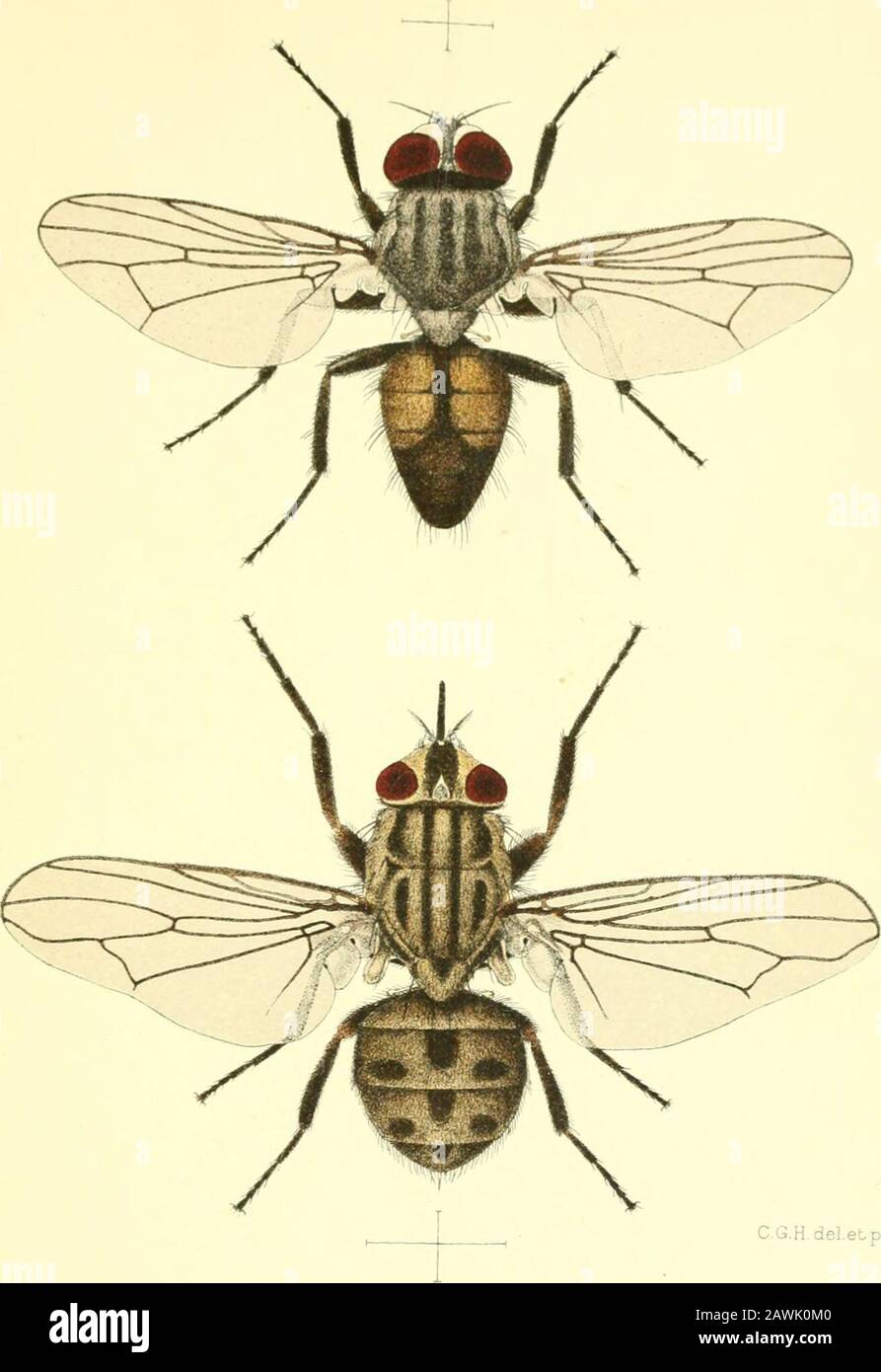The house-fly, Musca domestica Linn: its structure, habits, development, relation to disease and control . wings, and the open first posterior or apicalcell (5 R.) of the wing (cf. fig. 7). Most of the larvae feed upondecaying vegetable or animal substances. Without close examination, the tAVO species under examinationare liable to be mistaken for the same species, but such an exami-nation will serve to separate them. The abdomens of both speciesare conical, but the basal segments of the abdomen of F. canicu-laris are partially translucent, and the abdomen of F. scalaris isblack overspread wit

Image details
Contributor:
The Reading Room / Alamy Stock PhotoImage ID:
2AWK0M0File size:
7.1 MB (202 KB Compressed download)Releases:
Model - no | Property - noDo I need a release?Dimensions:
1310 x 1907 px | 22.2 x 32.3 cm | 8.7 x 12.7 inches | 150dpiMore information:
This image is a public domain image, which means either that copyright has expired in the image or the copyright holder has waived their copyright. Alamy charges you a fee for access to the high resolution copy of the image.
This image could have imperfections as it’s either historical or reportage.
The house-fly, Musca domestica Linn: its structure, habits, development, relation to disease and control . wings, and the open first posterior or apicalcell (5 R.) of the wing (cf. fig. 7). Most of the larvae feed upondecaying vegetable or animal substances. Without close examination, the tAVO species under examinationare liable to be mistaken for the same species, but such an exami-nation will serve to separate them. The abdomens of both speciesare conical, but the basal segments of the abdomen of F. canicu-laris are partially translucent, and the abdomen of F. scalaris isblack overspread with bluish gi^ey; each of the mid tibiae of thelatter species bears a distinct tubercle which is not found inF. canicularis (fig. 81). ^ Until recent years this species has always been referred to as Homalomyiacanicularis, but by the rules of priority the generic name Fannia of EobineauDesvoidy, 1830, which was given in his Essai sur les Myodaires, will have to replaceBouches genus Homalomyia, by which generic name these species have beenpreviously designated but which genus was not created until 1834.. C.G.H.del.etpi pmx. Fig. 79. Lesser House-fly, Fannia canicularh L. Male.Fig. 80. Stable Fly, Stomoxys calcitrans L. Female. THE LESSER HOUSE-FLY 187 The Lesser House-fly. Fannia canicnlans L. This species (fig. 79) is the less common of the two speciesof Hies found in liuuses. Its occurrence and frequency are, how-ever, very variable, and no valid explanation has been found so farin my investigations to account for this variability. F. canicularisis more abundant than 31. domestica for a short time during theearly part of the summer, usually in May and June. With thebeginning of the hot weather the numbers of the latter increaseenormously and replace the Lesser House-fly. In many cases whichwere observed the latter seemed to retreat in small numbers tothe rooms of the house not devoted to cooking, and they may